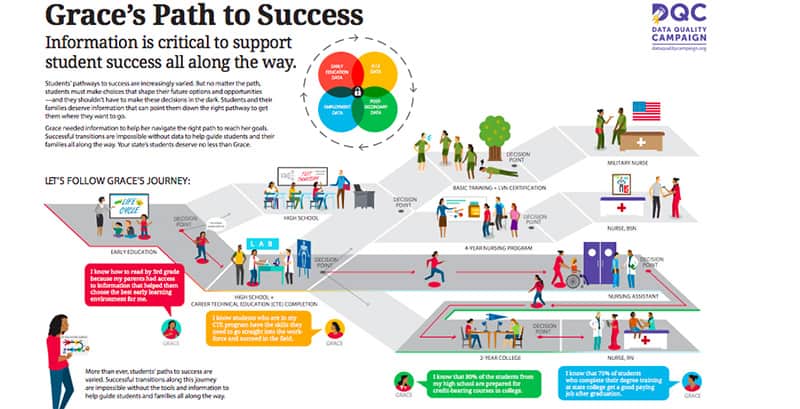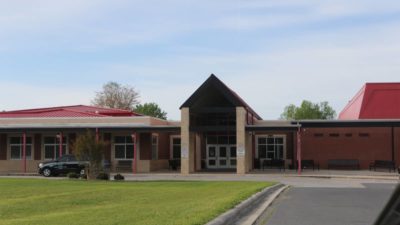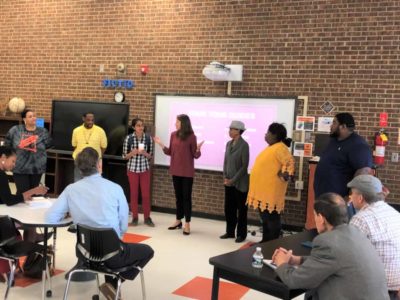

The “one size fits all” model of education is long gone, and good riddance. No two students are on the exact same pathway through school and into the workforce, and today they have more and more opportunities to find the best choices for themselves. Whether it’s a traditional high school or a career and technical education program, whether it’s into a four-year or a community college, the military or an apprenticeship, students and families need information to make the best decisions toward their own goals.
At the same time, state policymakers are grappling with real challenges facing the school-to-workforce pipeline. Rising student debt. Businesses with empty positions. Graduates having a hard time finding jobs. Colleges that don’t offer courses that keep up with today’s economy.
Fortunately, data can show state leaders how widespread these challenges are and allow them to pinpoint solutions. And those leaders have a role to play in making available information on pathways from school to workforce and their potential outcomes. By linking the data across agencies and sharing it, states can provide students and their families with the information they need to make informed decisions.
This legislative session, some policymakers are making it a priority: Legislators in six states — Arizona, Florida, Kansas, Missouri, Oklahoma and West Virginia — have introduced versions of the Right to Know Act, which would give students information about potential pathways after their K-12 education, as well as real workforce outcomes. The bill has already passed the state Senate in West Virginia.
At a time when it feels as if no one can agree on policy issues, it’s remarkable that so many states are considering the same model of improving pathways from school to workforce. And what’s most notable about this effort is that it all boils down to empowering students with information as a theory of change.
This bill puts this crucial data in the hands of students while they are in high school so they are empowered to make decisions about their future. Each year, the state education agency would be required to collect data related to postsecondary and career pathways, such as the most in-demand occupations, average starting salaries and average monthly student loan payments for individuals who attended postsecondary institutions and vocational schools. The data would be reported to high school guidance counselors to share with students. Kansas’s version goes a step further by prescribing an online tool through which students and the public could access the information.
This legislation represents a huge step forward in shining a light on the state of education and the workforce, and in empowering students by placing information about potential pathways and real outcomes at their fingertips.
What’s the catch? Implementation matters as much as, if not more than, passing this legislation. For these bills to actually make a difference for students, state leaders must do the following when making the legislation a reality:
- Focus on meaningful transparency by ensuring the data is easy for guidance counselors and students to use and understand.
- Engage stakeholders, including students, parents and counselors, to ensure that the specific measures are useful for decision-making.
- Provide support for local implementation. Reporting the data is not enough; state leaders must consider what people will need to be able to use it. Local leaders and guidance counselors may need additional support, such as training or time, to help students understand and use the information.
- Make the data available to the public and policymakers as well as students so they can draw additional insight from it.
- Ensure data quality by making sure systems are in place to streamline collection and reporting each year. Every state can connect data from early education all the way through the workforce. Legislation, like a bill New Jersey is considering, is one way to ensure that states have the necessary data.
Student transitions from school to workforce can’t be improved without data. The more complete and robust data that students and their families have about potential pathways and real outcomes, the better off they will be as they set off toward the future.
States have a role in setting these students up for success — and legislation like the Right to Know Act is a step in the right direction.
Editor’s note: This perspective was first published by The 74. It has been posted with the author’s permission.




